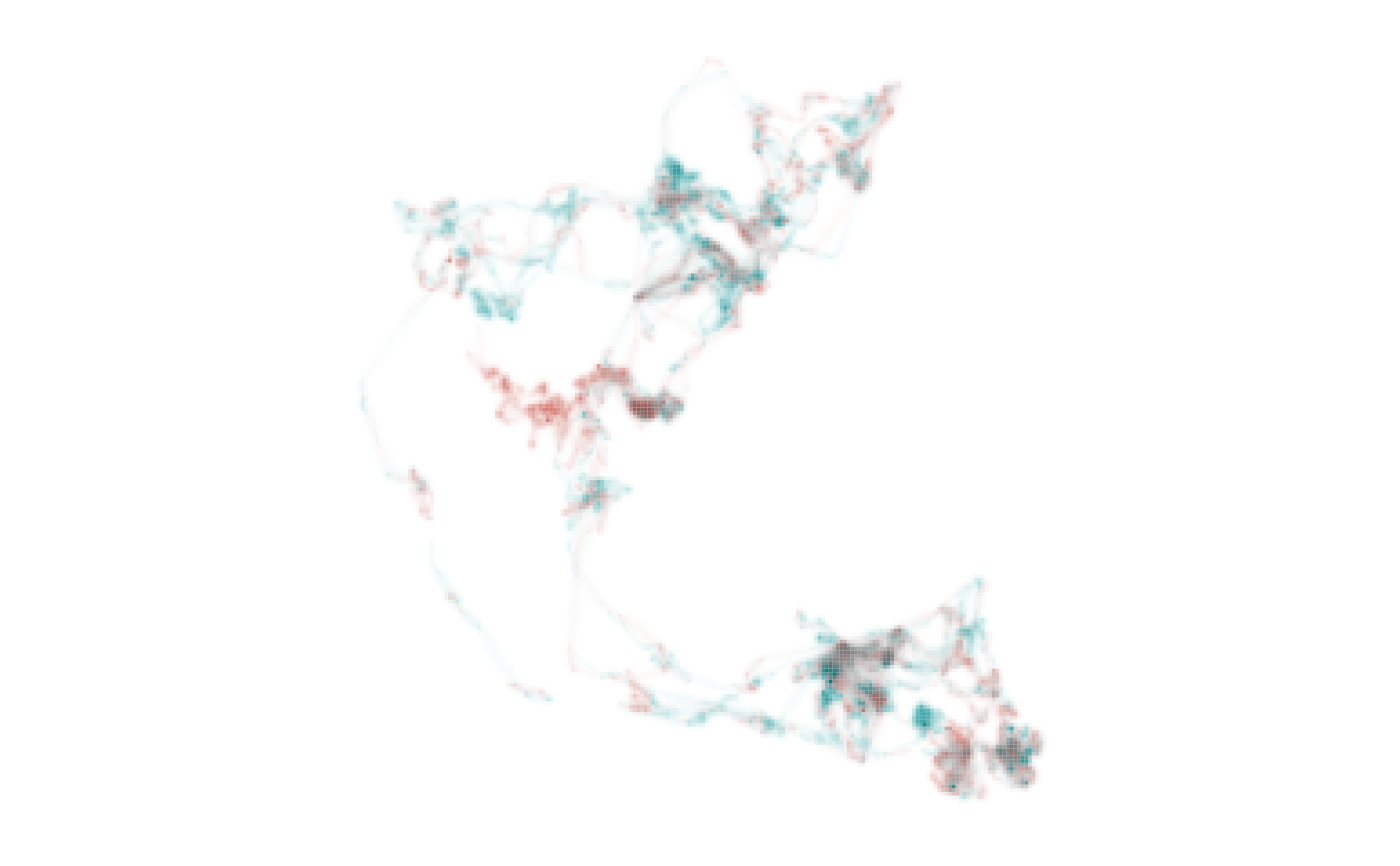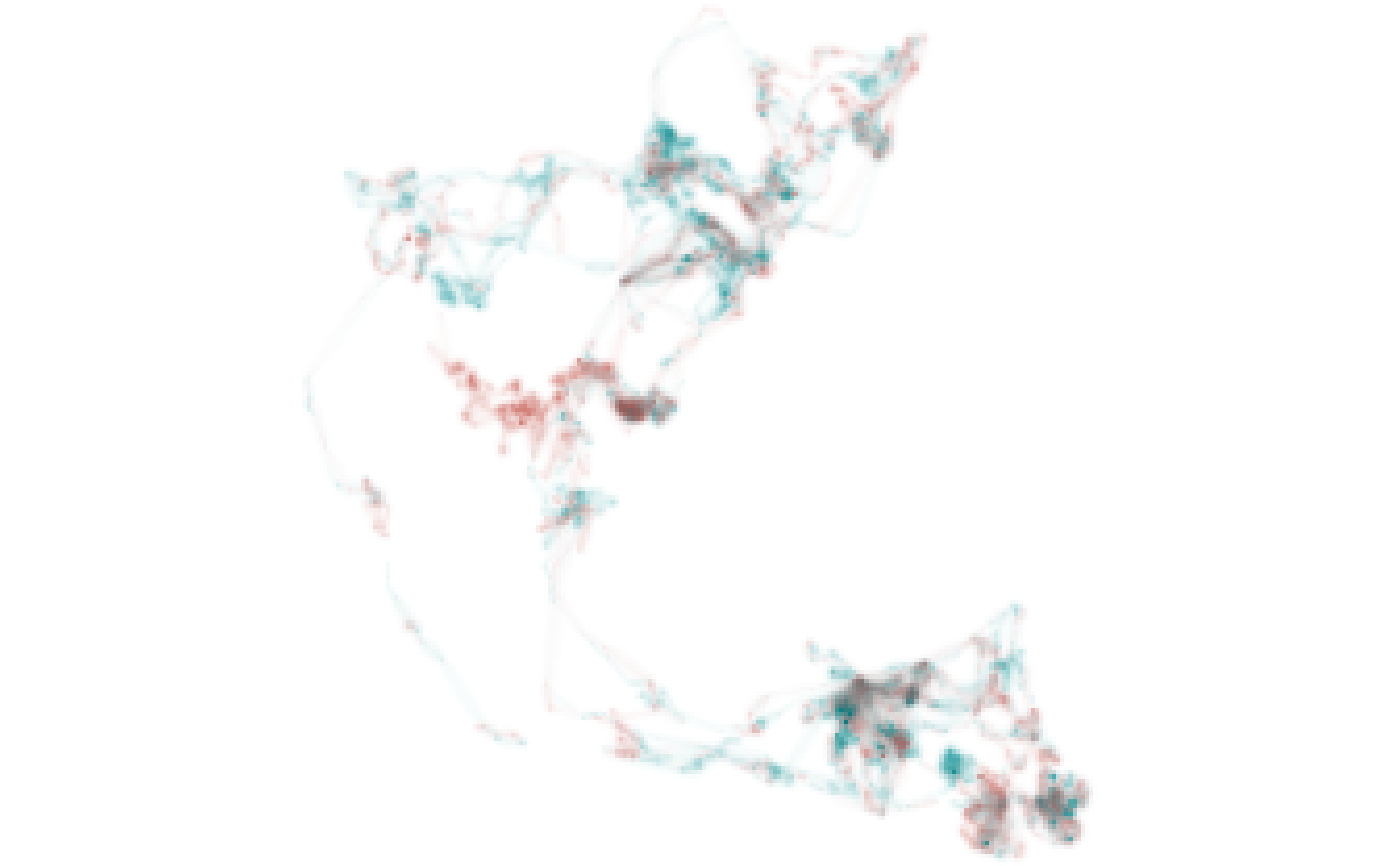This function enables visualization of distributional information in a single map by combining distribution metrics and an HCL color palette.
map_single(
x,
palette,
layer,
lambda_i = 0,
lambda_s = 0,
return_type = c("plot", "stack", "df")
)Arguments
- x
RasterStack of distributions processed by
metrics_pull()ormetrics_distill().- palette
data frame containing an HCL color palette generated using
palette_timecycle(),palette_timeline(), orpalette_set().- layer
integer (or character) corresponding to the layer ID (or name) of layer. A single distribution from within
xis mapped when thelayerargument is specified. Thelayerargument is ignored ifmetrics_distill()was used to generatex.- lambda_i
number that allows visual tuning of intensity values via the
scales::modulus_trans()function (see Details). Negative numbers increase the opacity of cells with low intensity values. Positive numbers decrease the opacity of cells with low intensity values.- lambda_s
number that allows visual tuning of specificity values via the
scales::modulus_trans()function (see Details). Negative numbers increase the chroma of cells with low specificity values. Positive numbers decrease the chroma of cells with low specificity values.- return_type
character specifying whether the function should return a
ggplot2plot object ("plot"),RasterStack("stack"), or data frame ("df"). The default is to return aggplot2object.
Value
By default, or when return_type = "plot", the function returns a
map that is a ggplot2 plot object.
When return_type = "stack", the function returns a RasterStack
containing five layers that enable RGBa visualization of a map using other R packages or external GIS software:
R: red, integer values (0-255).G: green, integer values (0-255).B: blue, integer values (0-255).alpha: opacity, numeric values (0-255).n_layers: number of layers inxwith non-NA values.
When return_type = "df", the function returns a data frame containing
seven columns:
x,y: coordinates of raster cell centers.cell_number: integer indicating the cell number within the raster.intensity: maximum cell value across layers divided by the maximum value across all layers and cells; mapped to alpha level.specificity: the degree to which intensity values are unevenly distributed across layers; mapped to chroma.layer_id: integer identifying the layer containing the maximum intensity value; mapped to hue.color: the hexadecimal color associated with the given layer and specificity values.
Details
The lambda_i parameter allows for visual tuning of intensity
values with unusual distributions. For example, distributions often
contain highly skewed intensity values because individuals spend a vast
majority of their time within a relatively small area or because
populations are relatively dense during some seasons and relatively
dispersed during others. This can make visualizing distributions a
challenge. The lambda_i parameter transforms intensity values via the
scales::modulus_trans() function, allowing users to adjust the relative
visual weight of high and low intensity values.
The lambda_s parameter allows for visual tuning of specificity
values via the scales::modulus_trans() function. Adjustment of
lambda_s affects the distribution of chroma values across areas of
relatively low and high specificity, thus modifying information available
to viewers. USE WITH CAUTION!
See also
Other map:
map_multiples()
Examples
# load elephant data
data("elephant_ud")
# prepare metrics
r <- metrics_distill(elephant_ud)
# generate palette
pal <- palette_set(elephant_ud)
# produce map, adjusting lambda_i to make areas that were used less
# intensively more conspicuous
map_single(r, pal, lambda_i = -5)
 # return RasterStack containing RGBa values
m <- map_single(r, pal, lambda_i = -5, return_type = "stack")
# visualize RGBa values
library(raster)
#> Loading required package: sp
plotRGB(m, 1, 2, 3, alpha = as.vector(m[[4]]))
# return RasterStack containing RGBa values
m <- map_single(r, pal, lambda_i = -5, return_type = "stack")
# visualize RGBa values
library(raster)
#> Loading required package: sp
plotRGB(m, 1, 2, 3, alpha = as.vector(m[[4]]))
